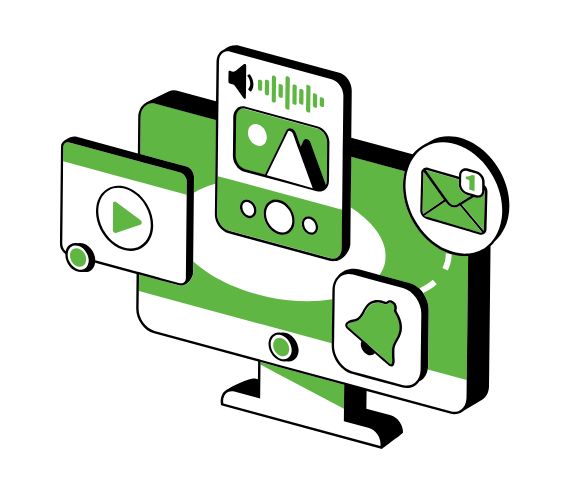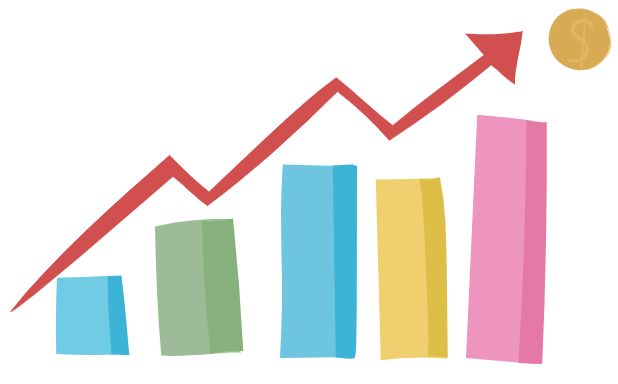“Trends fade. Algorithms shift. But like your favorite hoodie, some content just never goes out of style.”
Welcome to the world of evergreen content—the SEO gift that keeps on giving. While viral posts might spike traffic for a day, evergreen content brings in readers month after month, year after year. Let’s dive into why this type of content is a long-term win for your SEO strategy (and your sanity).
What Is Evergreen Content?
Evergreen content refers to material that maintains its relevance and accuracy over an extended period. It’s akin to evergreen trees that retain their leaves year-round, symbolizing content that stays “fresh” regardless of time. Such content addresses topics that are consistently searched for and valued by audiences, without being tied to current events or trends.

Why Evergreen Content Matters for SEO
Incorporating evergreen content into your SEO strategy offers several benefits:
- Consistent Traffic: Evergreen topics continue to attract visitors long after publication, providing a steady flow of organic traffic.
- Improved Search Rankings: Search engines favor content that remains relevant and authoritative, leading to better rankings over time.
- Cost-Effective: Once created, evergreen content requires minimal updates, offering long-term ROI with less ongoing effort.
- Backlink Attraction: High-quality evergreen content naturally earns backlinks, enhancing domain authority and SEO performance.
How Evergreen Content Works (Behind the Scenes)
At its core, evergreen content is designed to stay relevant and continue attracting traffic long after it’s published. Unlike trending or time-sensitive content (like news updates or seasonal announcements), evergreen content provides value over time—and that’s what search engines love.
Here’s a breakdown of the mechanisms that make it work:
1. Search Intent & Timeless Relevance
Evergreen content answers ongoing, foundational questions—like “how to save money,” “what is mindfulness,” or “best tools for freelancers.” These are the kinds of queries people search for year-round, every year.
Because these search intents don’t change with trends, your content remains useful to both your audience and Google.
2. Organic Traffic Compound Effect
Unlike time-sensitive content, which might spike and fade quickly, evergreen content builds momentum over time. As more users discover it, share it, and link to it, your content becomes more authoritative—and search engines reward that with higher rankings.
Think of it as digital compound interest:
Month 1: 100 visits
Month 6: 1,000 visits
Month 12: 5,000+ visits (with little extra effort)
3. Less Maintenance, Longer Shelf Life
Once created, evergreen content doesn’t require constant updating. At most, you might tweak:
- Outdated stats or screenshots
- External links or tools
- Formatting or layout for mobile/UX
By maintaining minimal upkeep, you continue reaping SEO benefits without reinvesting time or budget repeatedly.
4. Google’s E-E-A-T Framework
Evergreen content naturally supports Google’s E-E-A-T criteria (Experience, Expertise, Authoritativeness, and Trustworthiness). Since it’s built to educate and support users over time, it helps position your site as a knowledge hub, which builds trust with both algorithms and readers.
5. Backlink Magnet
Quality evergreen content often becomes a go-to reference that others cite in their blogs, videos, or resources. That means more inbound links, which improve your domain authority—another huge win for long-term SEO.
For example:
- A glossary of marketing terms might get linked by new blogs trying to explain “bounce rate”
- A productivity checklist might be embedded into hundreds of Notion templates or Pinterest boards
6. Consistent User Engagement
Because evergreen content remains relevant, users spend more time on the page, click internal links, and often share it with peers. This signals to Google that your content:
- Is helpful
- Has a low bounce rate
- Offers a smooth user experience
All of which are ranking signals that push your content higher up the SERPs.
7. TL;DR: How Evergreen Content Works in 5 Simple Steps:
- It solves timeless problems people are always searching for
- It ranks well because it’s useful, keyword-rich, and well-structured
- It gains traction over time with backlinks and social shares
- It requires minimal updating but delivers consistent results
- It supports your site’s authority and helps other pages rank via internal linking.

Types of Evergreen Content (with Examples & Use Cases)
1. How-To Guides
- What it is: Step-by-step instructions that help users solve a specific problem or complete a task.
- Why it’s evergreen: People are always searching for how to do things—whether it’s baking sourdough or setting up Google Analytics.
- Example: “How to Start a Blog in 2025” or “How to Organize Your Workspace for Productivity”
- Best for: Educational brands, SaaS platforms, DIY, wellness, finance, and productivity niches.
2. Listicles
- What it is: Articles in a list format, often covering tools, tips, ideas, or best practices.
- Why it’s evergreen: Listicles are easy to read, skimmable, and highly shareable—especially when they’re centered on timeless topics.
- Example: “10 Healthy Snacks That Actually Taste Good” or “7 Tools Every Remote Team Should Use”
- Best for: Lifestyle, tech, health, business, and e-commerce brands.
3. FAQs (Frequently Asked Questions)
- What it is: A collection of common customer or industry questions with clear, concise answers.
- Why it’s evergreen: As long as people have questions, they’ll keep looking for answers—especially if they’re just discovering your product or niche.
- Example: “What Is SEO?” or “How Does Two-Factor Authentication Work?”
- Best for: SaaS, e-commerce, fintech, healthcare, and any business with complex offerings.
4. Glossaries & Definitions
- What it is: A series of terms and definitions that help users understand niche or technical language.
- Why it’s evergreen: Newcomers are always entering industries, and clear explanations make you a go-to resource.
- Example: “The Ultimate Glossary of Digital Marketing Terms”
- Best for: B2B, SaaS, legal, medical, and educational content creators.
5. Tutorials
- What it is: Detailed walkthroughs of how to use a tool, platform, or technique, often more visual or in-depth than a standard how-to.
- Why it’s evergreen: As long as the process doesn’t change drastically, tutorials are long-lasting reference pieces.
- Example: “How to Create a Lead Capture Page in Mailchimp” or “Setting Up Your First Shopify Store”
- Best for: SaaS, e-commerce, creator tools, and productivity apps.
6. Case Studies
- What it is: Real-world examples of how a user/customer/business solved a problem using a product or method.
- Why it’s evergreen: Case studies act as social proof and educational content. If they focus on universal challenges, they stay relevant.
- Example: “How Company X Increased Leads by 120% with Email Automation”
- Best for: B2B, service-based businesses, agencies, and SaaS companies.
7. Checklists
- What it is: Simple, actionable lists users can follow to complete a task or plan something.
- Why it’s evergreen: Checklists are useful, printable, and save time. If tied to recurring tasks (like blog publishing or packing for travel), they stay relevant year after year.
- Example: “SEO Checklist Before Publishing a Blog” or “Your Spring Cleaning Essentials List”
- Best for: Productivity, travel, event planning, and content marketing brands.
Statistics Supporting Evergreen Content
- A study by Backlinko and BuzzSumo found that list posts and how-to guides are among the most evergreen content formats, consistently attracting shares and links over time.
- Websites prioritizing content optimization, including evergreen strategies, saw a 55% increase in organic traffic and a 40% higher engagement rate.
- Evergreen content draws in about 30% more backlinks compared to time-sensitive content, thanks to its ongoing relevance and usefulness.
When & How to Use Evergreen Content

When to Use Evergreen Content
Evergreen content works best when your goal is long-term visibility, consistent organic traffic, and a strong SEO foundation. Here are the ideal times and scenarios to focus on evergreen content:
1. Launching a New Website or Blog
When you’re starting out, evergreen content helps you:
- Build up domain authority
- Populate your site with helpful, searchable content
- Create a content base that brings in traffic steadily over time
Example: If you’re launching a finance blog, start with foundational posts like “What is Compound Interest?” or “How to Create a Monthly Budget.”
2. Filling Content Gaps in Your Niche
If there are timeless questions or topics in your niche that aren’t well-covered (or competitors rank weak content), that’s your chance to own that space with a better, long-lasting resource.
Example: A gardening tools store might notice no one ranks well for “How to Prune a Rose Bush Year-Round”—perfect evergreen territory.
3. Supporting Product or Service Pages
Evergreen blog posts can act as supporting content that educates and nurtures leads toward your offering.
Example: A SaaS brand offering CRM software might publish evergreen content like “How to Build a Sales Funnel” or “Best Practices for Contact Management.”
4. Driving Consistent Leads or Sign-Ups
Lead magnets (like checklists, how-to guides, or tutorials) tied to evergreen content keep working for you indefinitely.
Example: A productivity coach can offer a downloadable “Daily Planner Template” through a blog on “How to Build a Morning Routine.”
5. Repurposing for Ongoing Content
If you plan to reuse your content for social media, email newsletters, or YouTube, evergreen content is gold. You can break it into tips, quotes, reels, carousels, and more over time.
How to Use Evergreen Content Effectively
Here’s a strategic approach to making evergreen content work hard for your business:
Use tools like:
1. Research Timeless Topics
- Google Trends (to confirm year-round interest)
- Ahrefs/SEMRush (to find evergreen keywords)
- AnswerThePublic (to uncover FAQs and how-to queries)
Look for topics that:
- Don’t change with the news
- Are beginner-friendly or fundamental
- Solve ongoing problems or questions
2. Create High-Quality, Structured Content
Your evergreen content should be:
- Comprehensive – Cover the topic better than competitors
- Easy to navigate – Use headers, bullet points, and visuals
- Optimized – Add keywords, meta descriptions, and internal links
Example: If you’re writing “How to Start a YouTube Channel,” include:
- Step-by-step setup instructions
- Equipment recommendations
- Common beginner mistakes
- Internal links to your camera review or video editing tools post
Learn how to create high-quality content using AI
3. Regularly Refresh Evergreen Posts
Evergreen doesn’t mean “set it and forget it.” Every 6–12 months:
- Update stats or screenshots
- Add new examples or insights
- Optimize for new keywords or questions
This tells Google: “Hey, this content is still alive and helpful—keep ranking it!”
4. Use Internal Linking Strategically
Link your evergreen posts to:
- Related blog posts
- Product pages
- Category pages
This improves crawlability, keeps users on your site longer, and builds topic authority.
5. Promote It Like a New Post
Even though evergreen content lasts long, don’t forget to promote it often:
- Reshare on social media every few months
- Include it in onboarding emails or newsletters
- Turn it into a lead magnet or downloadable resource
- Feature it in your website’s sidebar or homepage
Pro Tip: Build an Evergreen Content Hub
Group your evergreen posts into a central resource or topic cluster—this helps with SEO and UX.
Example:
A brand selling fitness gear could create a “Beginner’s Fitness Guide” hub with:
- “How to Choose the Right Dumbbells”
- “10-Minute Daily Workout Routine”
- “Nutrition Basics for Muscle Gain”
Conclusion
Evergreen content is a vital component of a robust SEO strategy, offering enduring value, consistent traffic, and improved search rankings. By focusing on timeless topics and maintaining content accuracy, businesses can establish authority and connect with audiences over the long term.
Contact Us
If you have any questions or need further assistance, feel free to contact us.